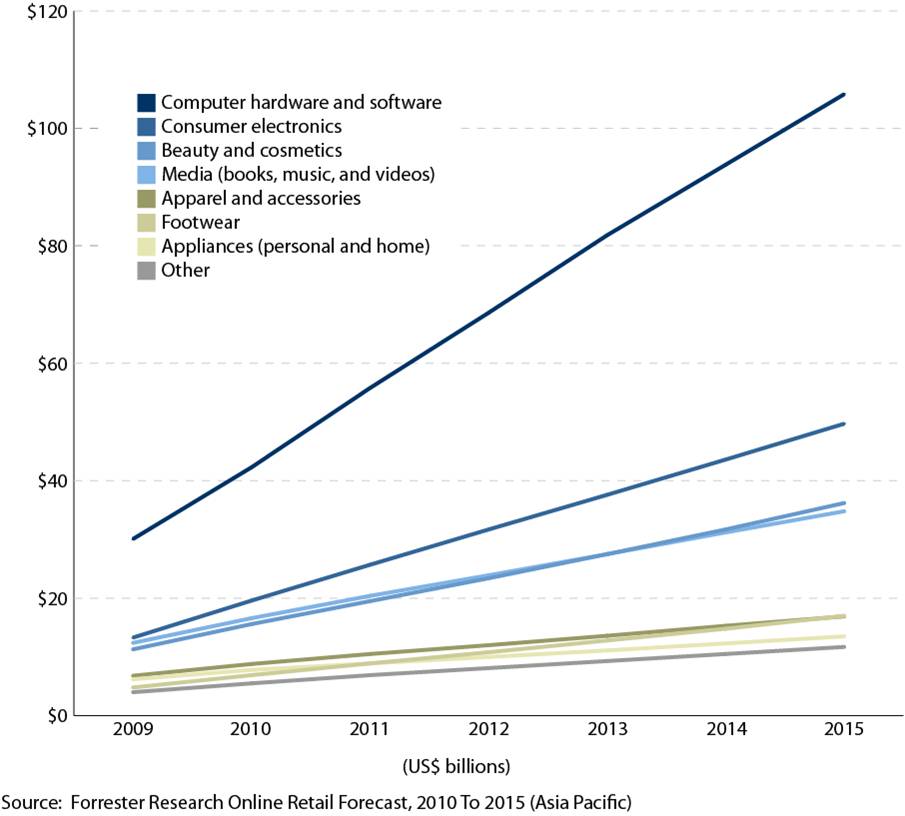In our Asian Ecommerce Market post, we established that the APAC ecommerce market is a collection of many markets at different stages of maturity. Heterogeneity exists in terms of languages, online market maturity, ecommerce buying culture, and purchasing power parity (GDP per capita).

Going To Market In Asia
Nevertheless, there are multiple ways to successfully go-to-market in each of these different APAC countries regardless of the individual market’s state of maturity. When thinking about how to establish a viable online venture in these markets, you’ll need to consider these models:
- Selling directly via ecommerce
- Selling directly via MSP
- Selling indirectly via publisher or VAR
- Selling directly via wholly-owned local entity
- Hybrid Model
Selling Directly Via Ecommerce
Selling directly via ecommerce means that you market and sell to consumers via the Internet and your website. It requires the creation of a fully internationalized and localized product and website experience for your target audience. One advantage of this go-to-market model is that you, the software manufacturer, retain full control over your brand. It also requires a relatively low amount of investment as you are not establishing a local subsidiary in your target market, nor are you paying local companies to help market your product and establish your brand in that region.
However, this model is not without its difficulties and costs. It requires an in-house team dedicated to internationalizing your product. Internationalizing a product means making sure it is fully compatible with the hardware typically used in that region or country. Without internationalization, the average person in your target market won’t be able to use your product. No amount of clever branding efforts can fix that problem.
You will also need a team to localize all the text found in the user experience. This includes everything from advertising to the online store to the user interface to customer support. It’s imperative that your team is fluently bilingual and have a native understanding of your target market’s culture. Without localization, users in your target market will not understand how to buy or use your software.
Selling Directly Via MSP
The difficulties and costs associated with selling directly via ecommerce often prevent companies from leveraging the full market opportunity in a new region. By partnering with an external partner (MSP), software companies can localize the user shopping experience and expand their customer base without maintaining dedicated teams in-house. The experience of an MSP in supporting sales in a new region may help increase distribution, but companies risk losing certain elements of brand control when an MSP offers a turnkey solution.
Selling Indirectly Via Publisher or VAR
As in the case of selling your products via MSPs, when selling indirectly through an external publisher or value added reseller (VAR), you risk losing some brand control when entering a new market.
The advantage in selling your product through a locally established publisher or VAR is that it allows you entry into a new market with relatively low investment requirements.
For example, the reason that 13 percent of Evernote users are Japanese is because Evernote relied on a distribution partnership with Sourcenext to help them establish their brand in retail locations. This type of partnership allows software companies to leverage the credibility that an established partner provides.
Selling Via Wholly-Owned Local Entity
In this model, a company establishes a local subsidiary in the target market. This is a very expensive go-to-market strategy and involves hiring local managers, sales and support staff. It is good for those looking to expand growth and should be reserved for mature companies who already have established their presence in a regional market.
The Hybrid Model
Depending on how strong your presence is in a given market, you might consider one or more of these models. Going back to Evernote’s entrance into the Japanese market, they created a local subsidiary to handle direct sales, customer support and online promotion. However, they also partnered with a distributor to navigate the retail space there.
Keystone
The APAC region is growing too rapidly to ignore. The first step to going to market in Asia is to understand the market opportunity in each country of that region and then consider the best approach to entering each market.
Doug Caviness and Ryan Sumner contributed to this blog post.